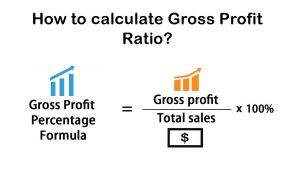Inventory turnover ratio is an indicator of how many times a company sells its average stock for a given time span. The greater the merchandise turnover, the greater the revenue production.
Businesses typically prefer fast inventory turnover, but not too fast, since both fast and sluggish inventory turnovers have advantages and disadvantages.
High Inventory Turnover Ratio means

Increased Sales
A rapid stock turnover leads to improved sales volume which leads to increased business profitability. A high product turnover indicates that the business responds quickly to its buyers. As a result, a business would have new stock that sells better than old inventory. Buyers like to shop at a store that stocks new stock. In brief, rapid product movement leads to higher retail revenue when shoppers receive new arrivals on a regular basis.
Improved Suppliers morale:
Fast product turnover boosts store suppliers morale. Suppliers became more optimistic and excited to sell stock. They would really like to partner with a business where the size selection is not only full, but also current, trendy, and seasonal. It takes less effort for suppliers to sell new stock rather than old stock.
Reduces chances of stock going obsolete
Nowadays, many of us live not for a cause, but for fashion and associated goods begins to collapse as soon as it enters the marketplace. Good inventory turnaround leads to a rapid sales, which means the business is less likely to have the same products for an extended period of time. As a result, the business will incur no revenue losses as a result of old, unsold, surplus, or expired inventory.
Less blockages of funds
If inventory turnover is high, it guarantees the supply of reordered stock by having adequate protection towards uncertainty in the allocation of funds, in addition to keeping inventory expenditure as low as possible. Since capital held in inventory is easily released, a merchant will have “ready cash” for new purchases and will be able to spend in other developing fields with higher returns.
Low Inventory Turnover Ratio
High maintenance cost
Merchants that buy in limited amounts to maintain a high product turnover usually experience higher costs. They could be ineligible for volume cuts or exclusive offers open to bulk buyers. Transportation costs can be higher as well, since retailers and dealers often charge higher delivery rates for smaller purchases. In certain circumstances, retailers may be forced to use costly express distribution systems to avoid out-of-stock conditions. Merchants can need to position orders more often, which would result in higher production costs.
Obsolete Stock
In businesses with low inventory turnover, businesses run the risk of getting left with unsold goods due to obsolescence. It can be a significant issue in markets where consumer preferences are continually changing or technology is quickly evolving. Taking expired goods implies that the merchant may not have enough storage capacity to carry products that are still in demand, resulting in missed revenue. The retailer may be forced to market the goods at drastically decreased prices, reducing its earnings.
Carrying Costs
Low Stock turnover can lead to higher carrying costs. Inventory must be processed, treated, and insured, both of which incur costs for the company. Stored inventory is also vulnerable to shrinkage, which would be depletion caused by events such as destruction and theft. Holding a huge inventory of slow-moving goods, like carrying outdated merchandise, results in missed chances due to a lack of storage capacity for more quickly turning objects.



